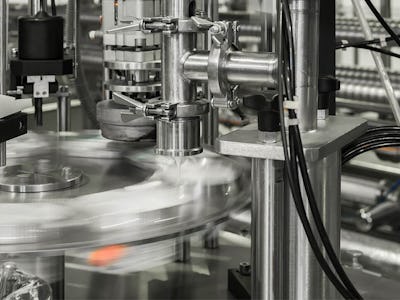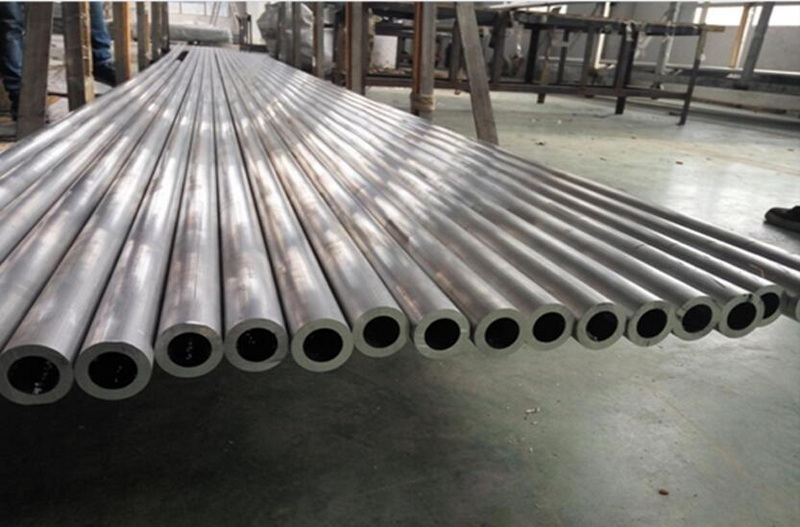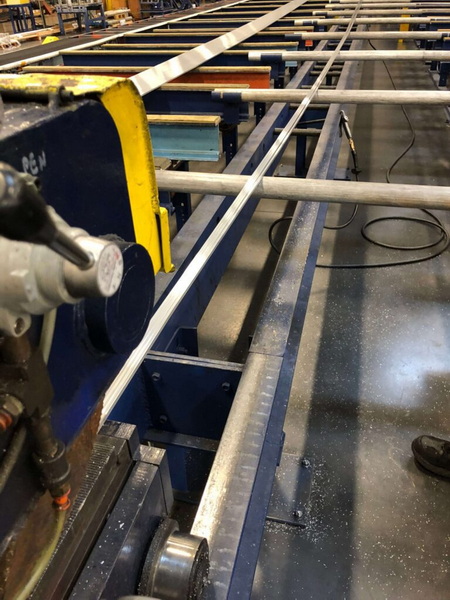Content Menu
● Understanding Aluminum Extrusion
>> Key Characteristics of 2024 T3511 Aluminum
● The Fabrication Process
>> 1. Material Selection
>> 2. Billet Preparation
>> 3. Heating the Billet
>> 4. Extrusion Process
>> 5. Cooling
>> 6. Cutting and Trimming
>> 7. Heat Treatment
>> 8. Aging
>> 9. Surface Finishing
● Applications of 2024 T3511 Aluminum Extrusion
● Advantages of Aluminum Extrusion
● Challenges in Aluminum Extrusion
● Future Trends in Aluminum Extrusion
● Conclusion
● Frequently Asked Questions
>> 1. What are the advantages of using 2024 T3511 aluminum extrusion?
>> 2. How does the extrusion process affect the properties of aluminum?
>> 3. What is the difference between direct and indirect extrusion?
>> 4. Why is heat treatment important for 2024 T3511 aluminum?
>> 5. What surface finishing options are available for aluminum extrusions?
Aluminum extrusion is a widely used manufacturing process that allows for the creation of complex shapes and profiles from aluminum alloys. Among these alloys, 2024 T3511 is particularly notable for its high strength-to-weight ratio, making it a preferred choice in aerospace and other high-performance applications. This article will delve into the detailed process of fabricating 2024 T3511 aluminum extrusion, exploring each step from material selection to the final product.

Understanding Aluminum Extrusion
Aluminum extrusion involves forcing aluminum alloy through a die to create a specific cross-sectional shape. This process is advantageous because it allows for the production of lightweight yet strong components that can be used in various applications, including structural components in aircraft, automotive parts, and architectural elements.
Key Characteristics of 2024 T3511 Aluminum
2024 aluminum alloy is primarily composed of aluminum, copper, and small amounts of other elements such as manganese and magnesium. The T3511 temper indicates that the material has been solution heat-treated, cold worked, and naturally aged to achieve a stable condition. This temper provides excellent mechanical properties, including high strength and good fatigue resistance, making it ideal for applications where weight is a critical factor.
The Fabrication Process
1. Material Selection
The first step in the fabrication of 2024 T3511 aluminum extrusion is selecting the appropriate aluminum alloy. The choice of alloy is crucial as it determines the mechanical properties and performance characteristics of the final product. For 2024 T3511, the alloy is chosen for its high strength and excellent machinability.
2. Billet Preparation
Once the alloy is selected, the next step is to prepare the aluminum billet. The billet is a solid block of aluminum that will be heated and extruded. The preparation involves cutting the billet to the desired length and ensuring it meets the specifications required for the extrusion process.
3. Heating the Billet
The aluminum billet is then heated to a specific temperature, typically between 400°C and 500°C (750°F to 930°F). This heating process is essential as it softens the aluminum, making it more malleable and easier to extrude. The exact temperature depends on the specific alloy and the desired properties of the final product.
4. Extrusion Process
Once the billet is heated, it is placed in an extrusion press. The press uses a hydraulic ram to force the heated aluminum through a die, which shapes the aluminum into the desired profile. The extrusion process can be done in two main ways: direct extrusion and indirect extrusion.
- Direct Extrusion: In this method, the billet is pushed directly through the die. This is the most common method used for aluminum extrusion.
- Indirect Extrusion: In this method, the die is pushed into the billet, which is held stationary. This method can produce more complex shapes and is often used for specific applications.
5. Cooling
After the aluminum has been extruded, it must be cooled to solidify the shape. This cooling can be done naturally or through forced air or water cooling. The cooling rate can affect the mechanical properties of the aluminum, so it is carefully controlled.
6. Cutting and Trimming
Once cooled, the extruded aluminum profile is cut to the desired length. This cutting process can be done using saws or other cutting tools. Additionally, any excess material or imperfections from the extrusion process may be trimmed away to ensure a smooth finish.
7. Heat Treatment
For 2024 T3511 aluminum, heat treatment is a critical step. The extruded profiles are subjected to a solution heat treatment process, where they are heated to a specific temperature and then rapidly cooled. This process enhances the strength and stability of the aluminum, making it suitable for high-performance applications.
8. Aging
After heat treatment, the aluminum profiles undergo a natural aging process. This involves storing the extrusions at room temperature for a specified period, allowing the material to stabilize and achieve its final mechanical properties.
9. Surface Finishing
The final step in the fabrication process is surface finishing. This can include anodizing, painting, or applying other coatings to enhance the appearance and corrosion resistance of the aluminum. Surface finishing is essential, especially for components used in harsh environments.

Applications of 2024 T3511 Aluminum Extrusion
The high strength and lightweight characteristics of 2024 T3511 aluminum extrusion make it ideal for various applications, particularly in the aerospace industry. Common uses include:
- Aircraft Structures: Used in wings, fuselage, and other structural components where weight savings are critical.
- Automotive Parts: Employed in high-performance vehicles for components that require strength without added weight.
- Marine Applications: Utilized in boat frames and other marine structures due to its corrosion resistance.
- Architectural Elements: Used in building facades and structural supports where aesthetics and performance are essential.
Advantages of Aluminum Extrusion
Aluminum extrusion offers several advantages over other manufacturing processes. These include:
- Design Flexibility: The extrusion process allows for the creation of complex shapes and profiles that would be difficult or impossible to achieve with other methods.
- Material Efficiency: Extrusion minimizes waste by using the entire billet, making it a cost-effective option for producing aluminum components.
- Lightweight: Aluminum is significantly lighter than many other metals, which is crucial for applications where weight reduction is a priority.
- Strength: The extrusion process enhances the strength of aluminum, making it suitable for demanding applications.
- Corrosion Resistance: Aluminum naturally forms a protective oxide layer, making it resistant to corrosion, which is particularly beneficial in outdoor and marine environments.
Challenges in Aluminum Extrusion
While aluminum extrusion has many advantages, it also presents certain challenges:
- Die Design: The design of the extrusion die is critical to the success of the process. A poorly designed die can lead to defects in the extruded product.
- Temperature Control: Maintaining the correct temperature during the heating and extrusion processes is essential for achieving the desired mechanical properties.
- Quality Control: Ensuring consistent quality throughout the extrusion process requires rigorous quality control measures, including regular inspections and testing.
Future Trends in Aluminum Extrusion
The aluminum extrusion industry is evolving, with several trends shaping its future:
- Sustainability: There is a growing emphasis on sustainable manufacturing practices, including recycling aluminum and reducing energy consumption during the extrusion process.
- Advanced Alloys: Research is ongoing into developing new aluminum alloys that offer improved performance characteristics, such as enhanced strength and corrosion resistance.
- Automation: The use of automation and robotics in the extrusion process is increasing, leading to greater efficiency and precision in manufacturing.
- 3D Printing: The integration of 3D printing technologies with aluminum extrusion is being explored, allowing for the rapid prototyping of complex shapes and designs.
Conclusion
The fabrication of 2024 T3511 aluminum extrusion is a complex process that involves several critical steps, from material selection to surface finishing. Each stage is designed to ensure that the final product meets the high standards required for its intended applications. With its excellent mechanical properties and versatility, 2024 T3511 aluminum extrusion continues to be a preferred choice in various industries.

Frequently Asked Questions
1. What are the advantages of using 2024 T3511 aluminum extrusion?
2024 T3511 aluminum extrusion offers high strength, excellent fatigue resistance, and a favorable strength-to-weight ratio, making it ideal for aerospace and automotive applications.
2. How does the extrusion process affect the properties of aluminum?
The extrusion process enhances the mechanical properties of aluminum by aligning the grain structure, which improves strength and durability.
3. What is the difference between direct and indirect extrusion?
In direct extrusion, the billet is pushed through the die, while in indirect extrusion, the die is pushed into the stationary billet. Indirect extrusion can produce more complex shapes.
4. Why is heat treatment important for 2024 T3511 aluminum?
Heat treatment is crucial as it enhances the strength and stability of the aluminum, making it suitable for high-performance applications.
5. What surface finishing options are available for aluminum extrusions?
Common surface finishing options include anodizing, painting, and applying protective coatings to improve appearance and corrosion resistance.






















